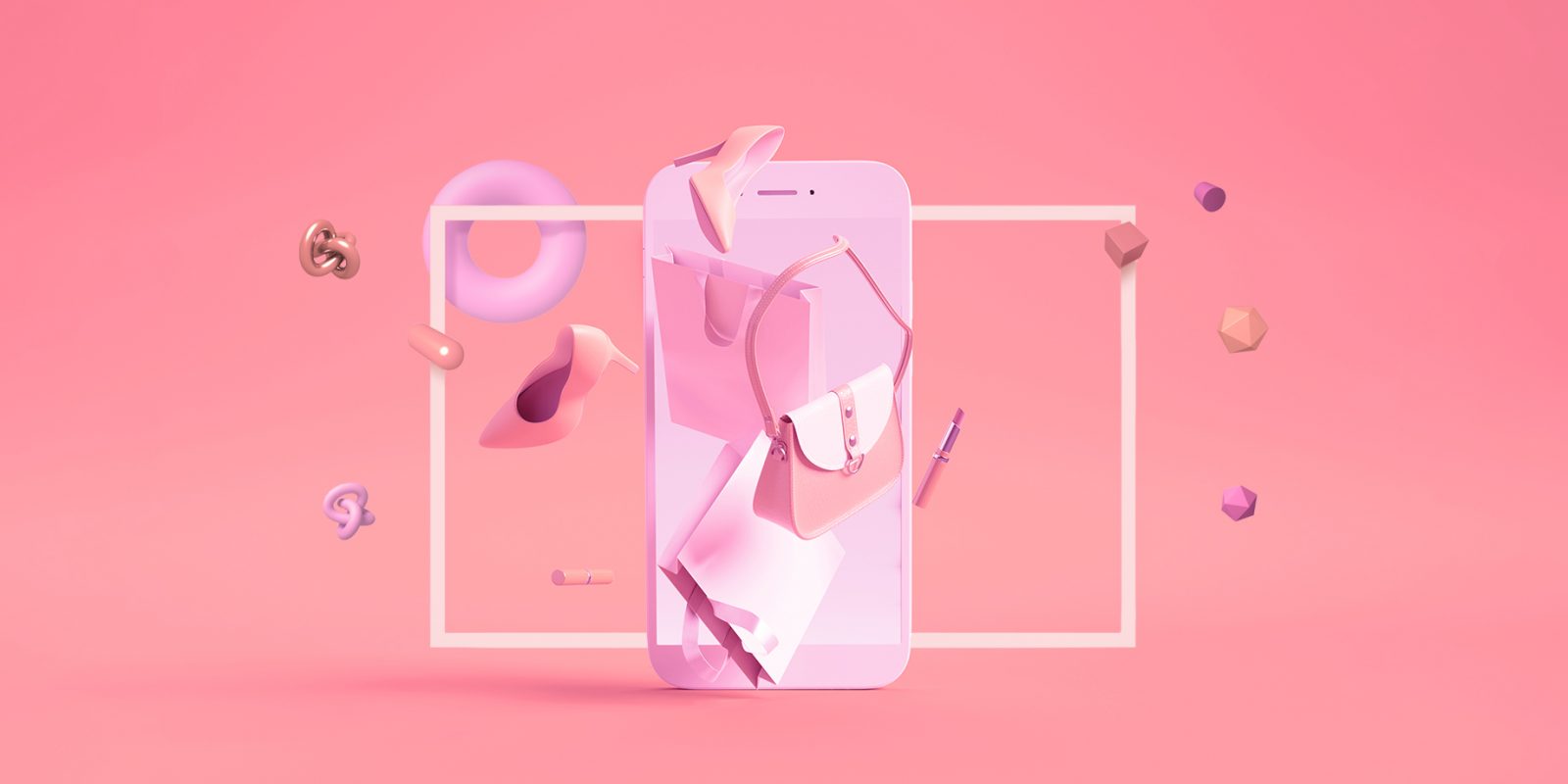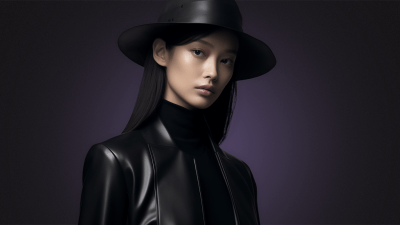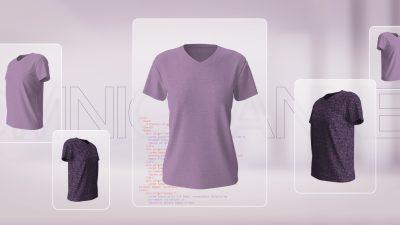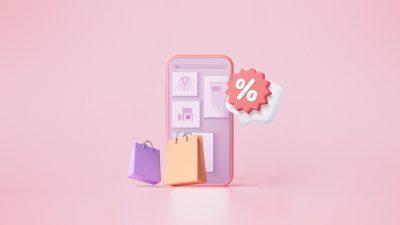Last Updated on: 24th May 2024, 08:50 pm
Highly stylized displays, prestigious high street locations, exclusive experiences, up close and personal sales assistance… the „established norms” of the luxury goods industry simply don’t fit into a post-pandemic world. And yet, after a challenging time in early 2020, many luxury brands are now embracing ecommerce as the first touchpoint for customers in their digital marketing strategies. They are finding ways to effectively communicate brand value in the digital space in the same way as they do in the offline world and are starting to replicate the personalized, curated experiences that buyers expect.
In this article you will learn:
- What are the main factors behind the rapid online expansion of luxury brands?
- Who are the customers of luxury brands? What changes can be expected in the next few years?
- How can luxury brands successfully run digital transformation and close the digital gap?
- How can deep learning and technology create the right customer experiences?
Table of Contents:
- Merging the value of traditional with digital
- The acceleration of online channels for luxury brands
- The reasons why online expansion is now the right play for luxury brands
- The online customer experiences challenge for luxury brands’ marketing
- Digital marketing challenges for luxury brands
- How technology and personalization can elevate luxury brands digital marketing
- Cookieless Fashion
- A commitment to evolving luxury brands
Digital marketing solutions are a part of that great change as luxury brands search for the perfect alchemy between data and visual personalization.
Merging the value of traditional with digital
While shoppers are generally more careful with budgets as a result of the pandemic, it is hard to definitively state that luxury has suffered because of buyer caution. Personal luxury goods are not a high-volume sales category, and there are still enough people with robust budgets who want luxury goods.
However, many brands have had to adapt in order to give those people the right opportunities to buy—mainly because luxury is not a category that has traditionally relied on digital sales channels. In fact, many brands have actively avoided developing online sales channels, fearing that they may somehow be a step away from their core values.
The acceleration of online channels for luxury brands
Although many luxury brands are not strong proponents of online sales and have been more resistant to online channels than other categories, there has still been an inevitable growth in digital influence over recent years. There is an appetite for online or hybrid purchases, with 67% of luxury shoppers expressing the desire for stores to incorporate greater levels of digital integration.
Now that the COVID-19 crisis has enforced an acceleration of the digitalization process and doubled the number of online sales in a single year, there are new opportunities for luxury brand marketing that embraces the online space. Currently, trends point to a growing digitalization of luxury shopping, initiated by generational shifts, the metaverse, and 3.0 shopping experiences.
The main catalyst for recent changes in the market is undoubtedly the pandemic, but demographic shifts should not be overlooked. Until recently, baby-boomers and Generation X were responsible for the growth of the luxury goods sector. Today, the center of gravity is shifting towards Millennials and Generation Z, i.e., generations that are very technologically advanced and live largely in an online world. Bain & Company estimates that by 2025, their share of the global market will reach 45%. To effectively reach this rapidly growing customer segment, luxury brands must rethink their multichannel sales model and digital advertising strategy.
Businesses are seeing this opportunity and taking advantage of it. LVMH, which is home to over 75 luxury brands, introduced its multi-brand 24S e-commerce site in 2017. The site has had a limited impact since inception, but the rapid growth of the online channel is now taking place. The challenge for the business is to create a marketing platform that will empower sales while being respectful of the heritage and ensuring brand safety.
The reasons why online expansion is now the right play for luxury brands
- Online is set to become the leading channel for luxury purchases by 2025, with revenues reaching $136 billion.
- Younger generations are joining the market for luxury products. As well as being drawn to culturally and ethically sensitive brands, they expect online channels as a standard.
- Now that the tipping point has been reached, the most successful marketing for luxury brands in the future will maximize online channels and find innovative ways to duplicate exclusive in-store experiences through digital channels.
The online customer experience challenge for luxury brands’ marketing
Moving online has seemed at odds with the traditional way of leading a tailored and personalized sales service for many luxury brands, which is why many were late to invest properly in digital channels. However, brands need to move away from the idea that ‘digital’ can’t be ‘exclusive’.
Brands can offer special members-only access tiers to content and offers if they have VIP membership programs. There are also guided one-to-one sales through video chats with sales assistants. Remote and digital do not have to mean distance.
The other key to creating curated experiences is precisely targeting shoppers through the right type of advertising.
Digital marketing challenges for luxury brands
According to “The State of Fashion 2024” McKinsey report, the global fashion industry is projected to grow by 2 to 4%, with the luxury segment facing challenges related to restrained consumer spending after a post-pandemic surge.
The report identifies ten key themes for 2024:
1. Climate Urgency & Sustainability Rules:
The escalating climate crisis in 2023 necessitates prompt action to address emissions and enhance supply chain resilience. New rules across various jurisdictions will prompt brands and manufacturers to revamp business models for sustainability.
2. Fast Fashion’s Power Play:
Fierce competition in fast fashion, led by emerging challengers like Shein and Temu, is forcing established players to adapt to new consumer preferences. Success for both disruptors and incumbents will be predicated on their ability to meet customers where they are.
3. All Eyes on Brand:
Brand marketing takes the spotlight as the fashion industry moves away from pure performance marketing. Brands benefit the most from forging emotional connections with consumers and emphasizing long-term brand building.
4. Consumer Shifts – Influencers and Outdoors Reinvented:
The anticipated travel boom in 2024 prompts changes in consumer values. Evolving influencer dynamics demand updates to brand marketing strategies, emphasizing video and flexible collaborations. Meanwhile, health-focused demands for technical outdoor clothing and “gorpcore” will grow. Outdoor brands are expected to blur functionality and style.
Brands are advised to focus on sustainability, ways to navigate fast-fashion competition, and adapt to consumer preferences. As climate change intensifies, environmental, social, and governance issues are expected to take center stage in the industry. Executives emphasize the importance of resilience, effective risk management, and preparation for various outcomes.
How technology and personalization can elevate luxury brands digital marketing
As luxury brands embrace online channels and also begin advertising more through retargeting, there are several ways that they can protect and elevate their brands.
What is retargeting? It is a marketing strategy that involves re-engaging users who have expressed interest in the brand’s products. The Internet is full of window shoppers—the online shopping cart abandonment rate for luxury brands is as high as 87.79 %. Bringing them back, in many cases, may turn out to be a more effective action than trying to win over completely new customers. The key to success is the way of communication and presenting the right products to the customer—those they were looking for or put in a shopping cart.
See also: The 5 Must-Have Features of Retargeting Ads for a Fashion Brand
Personalized experiences
The key to luxury has always been an understanding of what drives customers. What fuels their aspirations? Are they buying for current prestige or as a long-term investment in class? Are they looking for something timeless or avant-garde?
Just as marketing for luxury brands takes a personal, consultative approach toward sales, it helps to work with partners who ask the right questions about the brand and its own aspirations and communications. Creating personalized messaging for end-users starts with understanding the brand and then filtering that understanding through technology.
Deep Learning-powered advertising is particularly important here as it allows for greater precision in targeting. It can act as the first part of a curated sales journey, showing products of a selected type, style, and even size that will match each individual customer.
This technology opens up new possibilities on many levels – it allows, among others, to optimize a brand’s marketing budget and target customers better. Behavioral targeting analyzes historical data about users in order to present the advertisement to the most likely buyers. Contextual targeting ignores the past – it examines the search context in real-time (reads signals like the website’s URL, text, and images) and adjusts ad content accordingly. Especially for luxury brands, it is important that the advertisement reaches only the right audience and that the brand does not lose its exclusive character due to an overly intrusive online presence.
AI in Fashion
The application of Artificial Intelligence (AI) in high-end fashion is revolutionizing the industry, offering innovative solutions across various aspects of design, marketing, and customer experience.
AI plays a pivotal role in trend forecasting, leveraging vast data sets to predict upcoming styles. This not only allows brands to stay ahead in a fast-paced market but also promotes sustainability by reducing the amount of unsold merchandise.
The fashion industry is also embracing AI solutions in the form of algorithmic dynamic pricing to analyze market trends, ensuring luxury brands set prices based on real-time conditions. By leveraging sophisticated algorithms, brands can adjust prices dynamically to stay competitive, maximize revenue, and respond swiftly to market trends and consumer demand.
Furthermore, AI can be applied to enhance the customer experience through personalized shopping journeys, virtual try-on tools, and dynamic pricing strategies. Virtual try-ons powered by AI enable customers to visualize garments before purchase, reducing the likelihood of returns.
For further insights on AI in Fashion, check out our article: https://blog.rtbhouse.com/4-ways-fashion-is-using-ai-this-season/
Amazing creatives
Whether we are looking at perfumes, fashion houses, executive cars, or ultra-precise timepieces, luxury brands have always been at the pinnacle of the advertising world.
At RTB House, we believe that visuals create the connection between the data and the client. The look and feel of all digital ads need to match that of the client’s own brand book. If the client’s print ads have the feel of a million-dollar photoshoot in Monte Carlo, their online ads should make the same impression. We achieve this through banner ads that can adapt to any brand.
The right kind of exposure
Luxury goes hand in hand with exclusivity. Over-saturation of online advertising is always annoying. This can be particularly damaging for luxury brands. Users don’t expect over-selling from high-quality brands. Not only can Deep Learning algorithms, coupled with the RTB House ContextAI solution, target the right customers with the right ads, but they also estimate the right number of impressions. That means enough brand exposure to fuel customer aspirations but not so much that it cheapens the brand image.
Brand safety
Due to the cost of goods, luxury product purchases involve an elevated amount of trust and security. This is why it is incredibly important to make sure that the advertising solutions for luxury brands have the most robust security possible. At RTB House, we achieve this through our Brand Safety layer, which protects brands against exposure in the wrong parts of the online world. Sites with content that does not meet the standards of the brand or fit its image can be blacklisted, while the most desired web destinations can be added to a white list.
For users, it is also extremely important to prove that data privacy is ensured and that information is not being shared with third parties.
Cookieless Fashion
As Chrome forges ahead with plans for the deprecation of third-party cookies in early 2025, an increasing number of people using Google Chrome may have third-party cookies disabled when they visit your website. This poses a challenge for fashion brands accustomed to relying on third-party cookies for targeted advertising and personalized experiences. To navigate this shift, luxury brands’ digital marketing have several things they need to consider:
1. First-Party Data Utilization:
Fashion brands are focusing on collecting and leveraging first-party data from their customers and are forming closer partnerships with publishers. By encouraging users to willingly share their preferences and information, brands can build robust customer profiles for personalized marketing. Collaborating with publishers allows brands to reach relevant audiences in a cookieless environment while respecting user privacy.
2. Contextual Targeting:
Contextual targeting involves delivering ads based on the content context of the website rather than individual user behavior. In the absence of third-party cookies, luxury brands can align their ads with the content of the web pages to maintain relevance without relying on user-specific data.
3. AI-Powered Solutions:
Artificial Intelligence (AI) is increasingly being used to analyze large datasets and predict user preferences without the need for individual tracking. AI-driven algorithms can create personalized recommendations and targeted ads based on patterns identified in user behavior.
Navigating the cookieless future in fashion requires a strategic shift towards privacy-conscious practices, which includes adopting tools and platforms that align with regulations like GDPR and CCPA. This will lead to the introduction of innovative technologies and collaborative approaches to maintain effective luxury brands’ digital marketing and personalized customer experiences.
A commitment to evolving luxury brands
As luxury brands evolve to make the most of the digital landscape, we are committed to providing them with the MarTech to handle that change. We are also in a position to advise on how to successfully redefine current distribution strategies, strengthen online presence and base it on the latest fashion trends. By taking aspects such as smart shopping, product & brand image into account, customer loyalty as well as discounts and occasions, we can support not only building a brand’s strong position on the Internet but also properly respond to dynamically changing customer needs and consequently create a positive impact on ROI.
If you want to discuss the future of your luxury brand, please contact us. Let’s talk about what we could achieve together.





